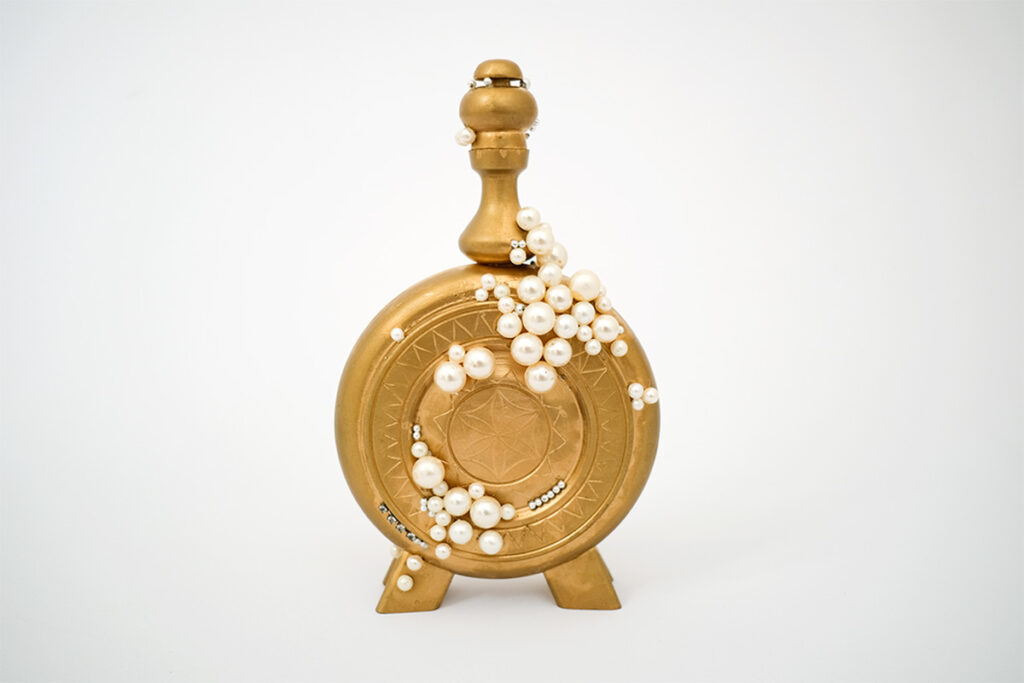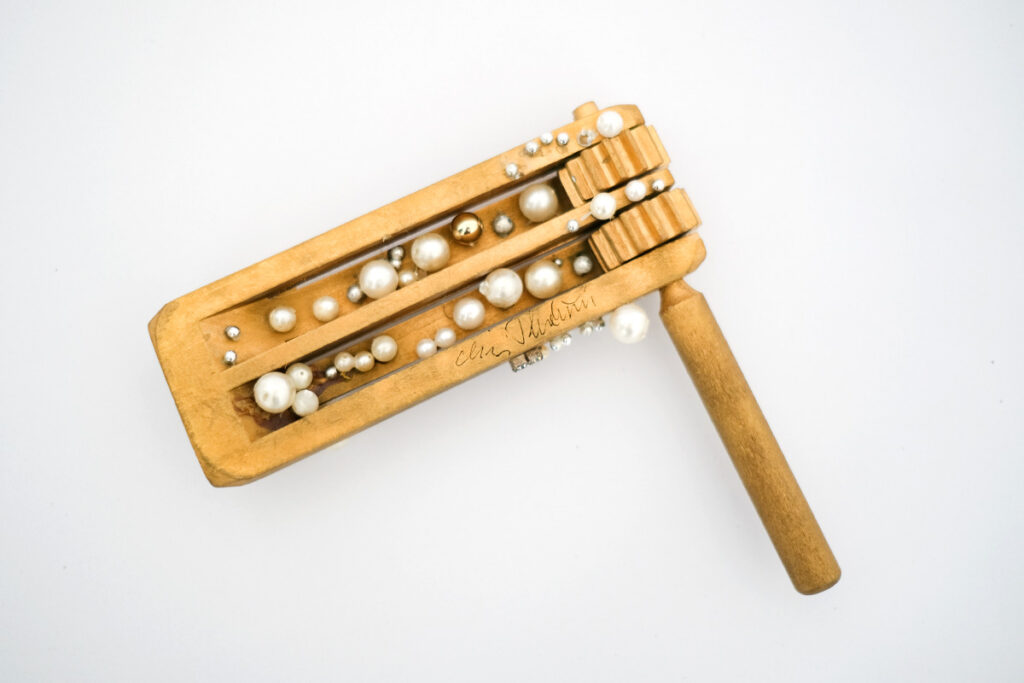Anetta Mona Chişa and Lucia Tkáčová started to work together in 2000 during their studies at the Academy of Fine Arts and Design in Bratislava. Over the course of two decades, the creative duo have managed to entrench themselves at both the national and international art scenes. The artists are perceived as distinctive representatives of postfeminism and engaged art who are no strangers to provocation, detachment, humour, irony, but also self-irony. Their works respond to various issues of femininity and masculinity, Eastern European history and our collective consciousness. They also focus on various social, cultural and political theories applied in practise, critically approach themes like capitalism, revolution, gender stereotypes, the inner workings and relationships within the art scene and cultural institutions. However, these “pigeonholes” apply mostly to their earlier works as in the recent years, they have moved from art’s more or less unsuccessful attempts to “change the system” to changing “themselves”. They focus more on sensuality and implementation of natural materials (e.g. animal bones). They have become “medicine women” who are trying to use art in order to achieve a “homeopathic” 1 change in the consciousness of our society. In Nina Gažovičová’s words: “their original, sober attitude have been gradually replaced with irrationalism as their predominant creative force.” 2 You can learn more about their work in an extensive article by Bojana Pejić that is available online in the database of Slovak contemporary art – Artbase.
Besides their popular video from the Dialectics of Subjectionseries, the Nitra Gallery collection also includes two of their objects – Canteen and Ratchet. These ready-made wooden souvenirs have been coated with gold paint and decorated with fake pearls and diamonds. These cheap dust collectors that can be found hanging over the fireplace in every other weekend cabin have turned into luxury artefacts that could be put on display at every other cultural institution. However, it is just an illusion, a self-deception. The subversive pieces can be also interpreted with regards to institutional critique, but also feminist discourse, because the beautification (e.g. of everyday objects as clothes etc.) by the means of scrupulous handiwork has been mostly assigned to women all throughout history. Souvenirs, as typical examples of human creativity, are often just a (self)mystification of the traditions. 3 “Faking” and “DYI” approaches to our national identity – and in this case also the irrational valuation of artworks and their commodification with a generally acceptable trumpery – can effectively turn something ordinary into extraordinary. However, we cannot forget that all that glitters is not art/tradition/heritage/value…
Anetta Mona Chişa (* 1975, Nădlac, Romania) and Lucia Tkáčová (* 1977, Banská Štiavnica, Slovakia) have been a creative duo since 2000. They both studied at the Academy of Fine Arts and Design in Bratislava – Chişa studied sculpture, Tkáčová graphic design. In 2006, they won the Oskár Čepan Award given to emerging artists. They exhibit regularly both at home and especially abroad. In 2011, they held an exhibit together with Ion Grigorescu at the RomanianPavilion at the 54th Biennale in Venice, Italy. Currently, they live and work in Prague, Czech Republic and Vyhne, Slovakia.
— Omar Mirza, April 2020
Sources
1 MOČKOVÁ, Jana: Vždy chceli umením meniť svet, dnes už vedia, že to funguje inak [They Have Always Wanted to Change the World with Art, Today, They Know Better], in: Denník N, October 25, 2017, available at: https://dennikn.sk/920980/vzdy-chceli-umenim-menit-svet-dnes-uz-vedia-ze-to-funguje-inak/ (accessed on April 3, 2020)
2 In: GAŽOVIČOVÁ, N. (ed.): a Love Can atTack a sun. Ah, atoMic I., Bratislava: SOGA Auction House, 2017. Available at: https://www.soga.sk/aukcie-obrazy-diela-umenie-starozitnosti/blogy/nina-gazovicova/abracadabra-monachisatkacova (accessed on April 3, 2020)
3 For example, the “traditional” Slovak husk dolls were not created before the middle of the 20th century. They were introduced by the artist Kamila Ryčlová-Rauchová while she was working on corn husk souvenir designs inspired by children’s games and they have become well known internationally thanks to ÚĽUV – The Centre for Folk Art Production. More information can be found at: http://www.uluv.sk/sk/encyklopedie/tradicne-remesla-a-domacke-vyroby/tradicne-remesla-a-domacke-vyroby/vyroba-zo-supolia/(accessed on April 3, 2020)
Inventory No.: F 45
Artist: Anetta Mona Chişa & Lucia Tkáčová
Title: Canteen
Year of origin: 2004
Technique: mixed media (ready-made)
Material: mixed material (wood, pearls, fake diamonds)
Dimensions: height 28 cm; width 16,5 cm; depth 8 cm
Signature: bottom side, in pen, signatures: „Chisa Tkáčová“
Inventory No.: F 46
Artist: Anetta Mona Chişa & Lucia Tkáčová
Title: Ratchet
Year of origin: 2004
Technique: mixed media (ready-made)
Material: mixed material (wood, pearls, fake diamonds)
Dimensions: height 16,5 cm (ratchet handle); width 17 cm (ratchet); depth 3 cm (top part)
Signature: rear side, in pen, signatures: „Chisa Tkáčová“

